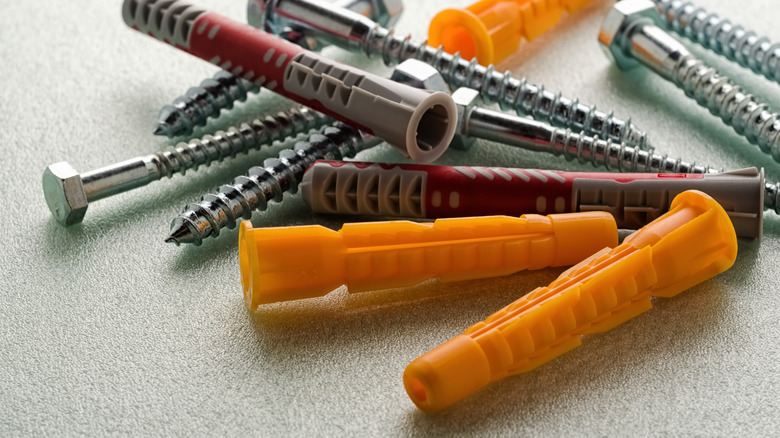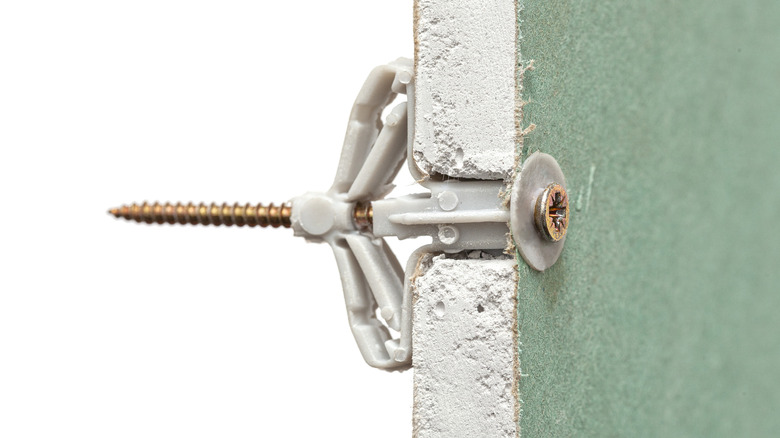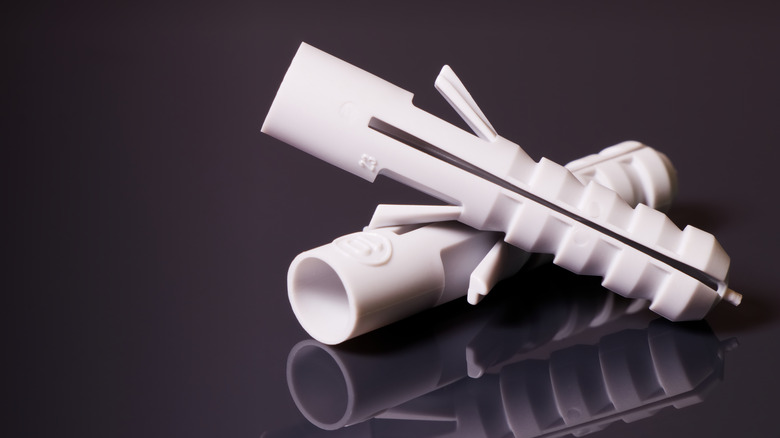How To Use And Remove Wall Anchor Screws
Hanging up and displaying items should be done with a lot of precision and thought, as improperly doing so can result in damage. These are not only inconvenient but can be costly in a variety of ways, including having to replace the fallen item, be it televisions, mirrors, etc., patch holes in your wall from where it fell, and potentially even replace dented floors. Wall anchors are designed to hold up heavy items by, as the name suggests, anchoring deep into your wall.
As Home Depot notes, wall anchors should also be used in place of nails for lighter objects hung on drywall, paneling, and tile, as the nails tend to slip out without something to keep them in place, resulting in more broken items. Wall anchors aren't as easy to nail into the wall as common nails, though; improperly installing and removing them could result in many costly mistakes.
Using wall anchors
Before installing your wall anchors, you need to know what kind you should use. While all of them work the same way by expanding into your wall to get a better grip than common nails, according to Pro Tool Reviews, the variety you need depends on the weight of what you're hanging. Under 10 pounds, you need a plastic sleeve anchor. But 10 to 25-pound items require a self-drilling threaded drywall anchor, 25 to 50-pound objects need snap toggles, molly bolts, or traditional toggle bolts, and items over 50 pounds should be screwed into studs.
Begin by marking with a pencil where you want to install your item. All wall anchors follow similar protocols. Commence by drilling a small hole, either pilot size or per the package's directions, and stick the sleeve into the hole. Use a mallet or hammer to make it flush with the wall, and then screw your item into the hole.
Removing wall anchors
You should exercise as much caution when removing wall anchors as when installing them. As Lowe's notes, wall anchors are very hard to get out, and doing so incorrectly could seriously mess up your walls. Wall anchors expand and press into the inside of your drywall and are not meant to be easily removed.
To begin, get a screwdriver and remove the screw inside the wall anchor. Next, add a drill bit two sizes larger than the hole of the anchor. The bit should touch the edge of the hole, but it shouldn't be able to go in. Drill into the anchor hole. Your goal is to get it to go into the wall. However, you need to be careful that the bit doesn't jut into the wall in the process, as you could hit and potentially puncture electric wires or plumbing pipes. Once the metal collar breaks, gently nudge the anchor back so it falls into the wall. Use caulk and plaster to fill the hole.


